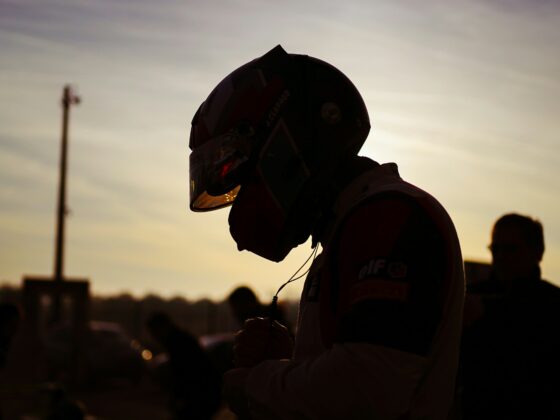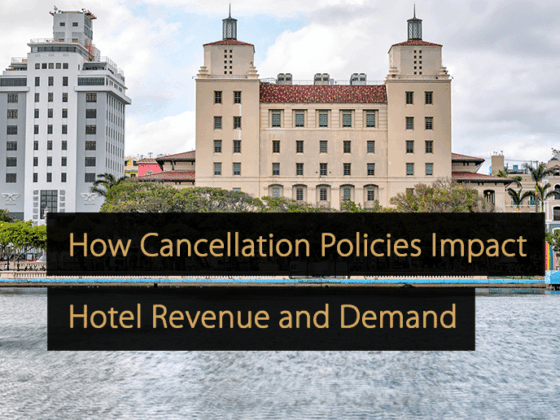
EBITDAR (Earnings Before Interest, Taxes, Depreciation, Amortization, and Restructuring/Rent) is a profit metric that excludes costs not directly related to operational performance.
It’s very similar to the more widely known EBITDA (Earnings Before Interest, Taxes, Depreciation, and Amortization): Both provide a more accurate measure (compared to net income) of a business’s ability to generate profits from its core operations by focusing on the company’s core operational performance.
The difference, however, is that EBITDAR also excludes rent and restructuring costs. This makes it particularly relevant for businesses like hotels (but also restaurants, casinos, or airlines), which often face high rent expenses.
In this article, we break down this key metric for hotels, providing tips to improve profitability and how technology can simplify reporting.
EBITDAR formula explained
One way to calculate EBITDAR is first to determine earnings by subtracting all expenses from revenue and then adding back five cost categories.
The formula for EBITDAR is as follows:
EBITDAR = Earnings + Interests + Taxes + Depreciation + Amortization + Rent/Restructuring
EBITDAR can also be calculated by adding the missing cost categories to EBIT (Earnings Before Interest and Taxes) or EBITDA.
EBITDAR is calculated using details from the income statement, which presents a company’s revenues and operating expenses over a specific period.
The costs above are excluded because they would skew earnings results since they are either beyond management’s control, non-cash expenses, or one-off costs. Let’s examine them in detail:
Interests. Interests are paid on loans or lines of credit and can vary depending on the conditions granted by different financial institutions.
Taxes. Although management is expected to have strategies in place to minimize tax expenses, taxes do not depend on operational efficiency and can vary from region to region.
Depreciation and amortization. These expenses represent the allocated cost of assets that are either tangible (such as buildings, furniture, and equipment) or intangible (such as brand rights and permits) over their useful life. Although they are non-cash expenses, they can have an impact on the bottom line.
Rent costs. Some hotels rent their properties, while others own them and may carry loans for purchasing or renovating them. Since rent is classified as an operational and not a financing expense, hotels that rent properties can appear less indebted and more financially stable than those that own their assets. This difference can distort financial comparisons.
Restructuring costs. When hotels restructure their operations, they often face high one-off costs, such as severance payments for laid-off employees or fees for consultants. EBITDAR excludes restructuring costs because they are non-recurring and can distort a company’s profitability.
Calculating EBITDAR: Step-by-step
Let’s take the example of a hotel that last year generated total revenue (from rooms, F&B, events, and other ancillary sources) of $4,500,000.
The total costs amounted to $3,550,000, which included the following:
-
Taxes for $550,000
-
Interests for $150,000
-
Depreciation for $250,000
-
Amortization: $100,000
-
Rental costs for $300,000
The net income is $4,500,000 – $3,550,000 = $950,000.
We then add back non-operational costs to calculate EBITDAR
= Net income + Taxes + Interest + Depreciation + Amortization + Rent
EBITDAR = $950,000 + $550,000 + $150,000 + $250,000 + $100,000 + $300,000 = $2,300,000
What does a good EBITDAR look like?
The absolute value of EBITDAR alone doesn’t provide much insight. To evaluate it effectively and compare it apples-to-apples to those of previous years or of other hotels, we must relate it to total revenue by calculating the margin. The formula is:
EBITDAR margin = EBITDAR / TOTAL REVENUE x 100
Using our example:
EBITDAR margin = 2,300,000 / 4,500,000 x 100 = 51.11%
While there’s no universal benchmark for EBITDAR, a margin above 50% is strong, while anything above 10% is generally regarded as good for EBITDA.
It’s important to note that hotels are not required to include EBITDAR or EBITDA in their financial statements. Large hotel groups typically disclose EBITDA, although often as an absolute value or as a variance compared to the previous period rather than as a margin.
EBITDAR, on the other hand, is rarely shared. One notable exception is the Dalata Hotel Group, which reported an EBITDAR margin of 39.4% in H1 2024, down slightly from 40.6% in H1 2023.
Advantages and limits of EBITDAR
EBITDAR allows hotel groups to compare properties within their portfolio more accurately than EBITDA. This is because it excludes rent costs —which can vary significantly based on location and lease terms—as well as one-time restructuring costs that might otherwise distort a company’s financial performance.
Also, since it has a stronger focus on operating income, EBITDAR provides better insights into revenue trends and long-term performance. This is particularly important in an asset-heavy industry like hospitality, where seasonal demand and operating costs can vary widely.
However, EBITDAR also has two limits to take into account:
1. It’s a non-GAAP financial metric
EBITDAR is not regulated by Generally Accepted Accounting Principles (GAAP). Companies can choose different ways to calculate it, which can lead to inconsistencies or even misrepresentation, such as categorizing frequent restructuring costs as one-off expenses when they may actually indicate deeper operational issues.
2. It’s not a reliable metric for cash flow
While it excludes non-cash expenses such as depreciation and amortization, it also excludes cash expenses such as interest, taxes, rent, and restructuring, which must still be paid by the hotel.
The impact of EBITDAR on a hotel’s business
EBITDAR can help hotels make better decisions across several areas:
Operational efficiency
By reflecting a hotel’s real operational health, EBITDAR shows how well the property is being managed, independent of financing and ownership structures. This helps hotel management focus on improving controllable factors like:
Financing and investments
For independent hotels or groups looking to sell, acquire, or refinance, EBITDAR provides a reliable measure of value and future potential. A strong EBITDAR indicates financial stability, which can:
It can also help identify underperforming properties within a portfolio that may require investment or divestment.
Lease negotiations
EBITDAR is the basis for calculating the rent coverage ratio, which helps hotels evaluate whether their lease expenses are sustainable. The formula is
Rent coverage ratio = EBITDAR/RENT
Using the earlier example, the ratio is
2,300,000 / 300,000 = 7.66
This is a very healthy ratio, indicating that the hotel’s core activity generates 7.66 times the profit necessary to pay the rent.
Internal collaboration
As a profit metric focused on operations, EBITDAR provides a common ground for finance teams (who track profitability) and operations teams (who manage day-to-day performance) to assess how effectively the hotel is being run.
Performance comparison
EBITDAR allows hotel groups to compare properties in regions with varying rent costs and taxes, to identify those that are performing well or may require operational improvements.
For example, a lower EBITDAR margin at one property might prompt an analysis that reveals excessive utility costs due to outdated equipment.
Financial analysis
When EBITDAR is combined with other metrics, such as ADR (average daily rate), occupancy rate, or RevPAR (revenue per available room), it can help dig deeper into financial metrics.
For example, a high RevPAR combined with a low EBITDAR margin could indicate that the hotel is generating strong revenue, which doesn’t translate into operating profit due to high costs.
How technology simplifies EBITDAR tracking
Like all metrics, EBITDAR is only as reliable as the data used to calculate it. Several parts of a hotel’s tech stack contribute to an accurate EBITDAR:
Hotel accounting software and PMS
On the revenue side of the EBITDAR formula, a property management system (PMS) consolidates data from rooms, F&B, etc., while integrated accounting software tracks financial expenses, including operating costs, depreciation, and rent.
Many accounting platforms come with pre-built templates for EBITDAR calculations. A PMS with multi-property functionality allows hotel groups to monitor and compare EBITDAR across their portfolio.
Real-time data collection and calculation
The data consolidation part becomes more efficient if the PMS is part of a suite of applications that automatically collect and send EBITDAR data, eliminating time-consuming manual reconciliations.
Business intelligence software
To improve EBITDAR, teams can use business intelligence software to collaborate, identify opportunities to reduce costs, and find ways to increase revenue.
7 tips to improve EBITDAR
As a profit metric, EBITDAR can be improved in two ways: increasing revenue and reducing costs. Here are some tips to do that:
1. Optimize revenue
Increase ADR and RevPAR using an RMS (revenue management system), diversify revenue streams (e.g., F&B or events), tap into new market segments such as corporate or family groups, and implement upselling/cross-selling.
2. Control costs of goods sold (COGS)
Use technology to monitor labor, utilities, and supply expenses. For example:
-
An energy management system to identify inefficiencies
-
A labor management system to optimize staffing levels based on occupancy forecasts
-
Procurement and inventory management software to track inventory levels and control supply costs.
3. Improve marketing and distribution
Optimize distribution channels to reduce sales commissions. Reevaluate your current contracts with OTAs (online travel agencies), GDSs (Global Distribution System), and other partners and invest in direct marketing strategies.
4. Improve guest retention
Invest in loyalty programs that reward repeat stays with discounts, exclusive offers, or perks like free upgrades and late checkouts.
5. Reduce rent costs
Negotiate better lease terms, for example, by taking advantage of shifted market conditions or by extending lease agreements for longer periods. Consider offsetting rent costs by subleasing underutilized spaces, such as conference rooms or retail areas.
6. Reevaluate vendor contracts
Regularly review contracts with suppliers of food and beverages, cleaning services, linens, and amenities. Look for opportunities to consolidate purchases with fewer vendors or negotiate volume discounts.
7. Explore strategic partnerships
Form partnerships with local businesses, such as tour operators, spas, and restaurants, to offer bundled packages or co-branded promotions that improve the guest experience and drive bookings.
Tracking & improving financial performance
EBITDAR helps hotels assess operational performance, compare properties, and make informed financial decisions. By isolating controllable factors, it offers a clearer picture of profitability and potential. Leveraging technology, hotels can use EBITDAR to not just track performance but also identify areas for growth and efficiency.
Boost financial performance with Cloudbeds.







